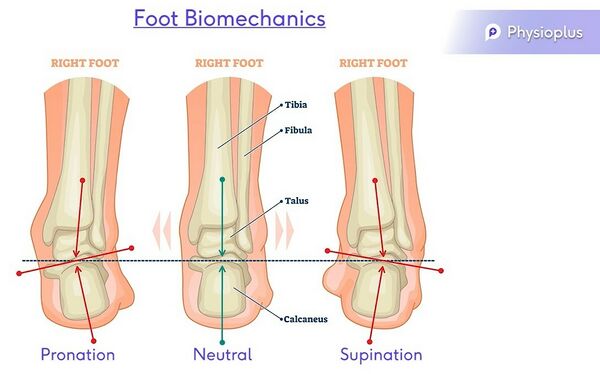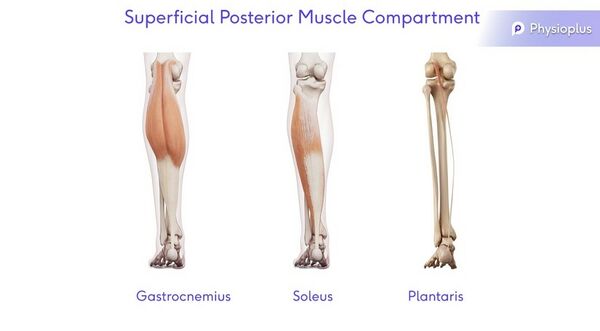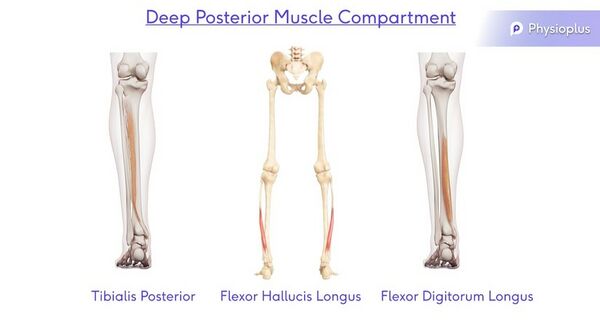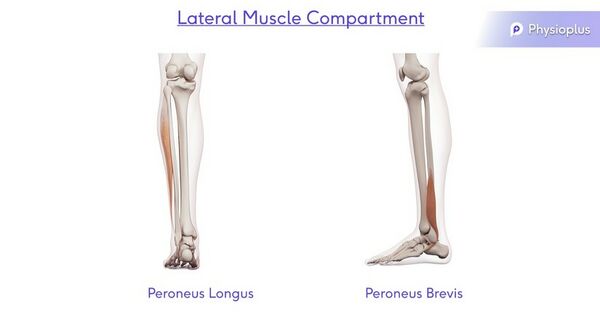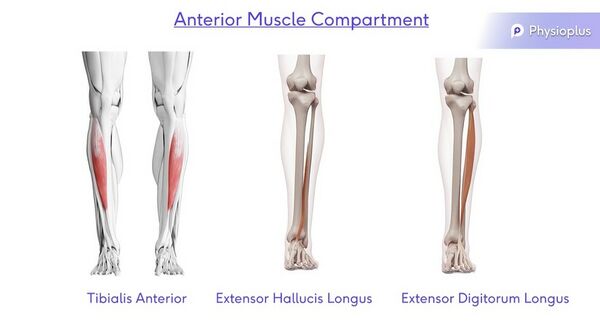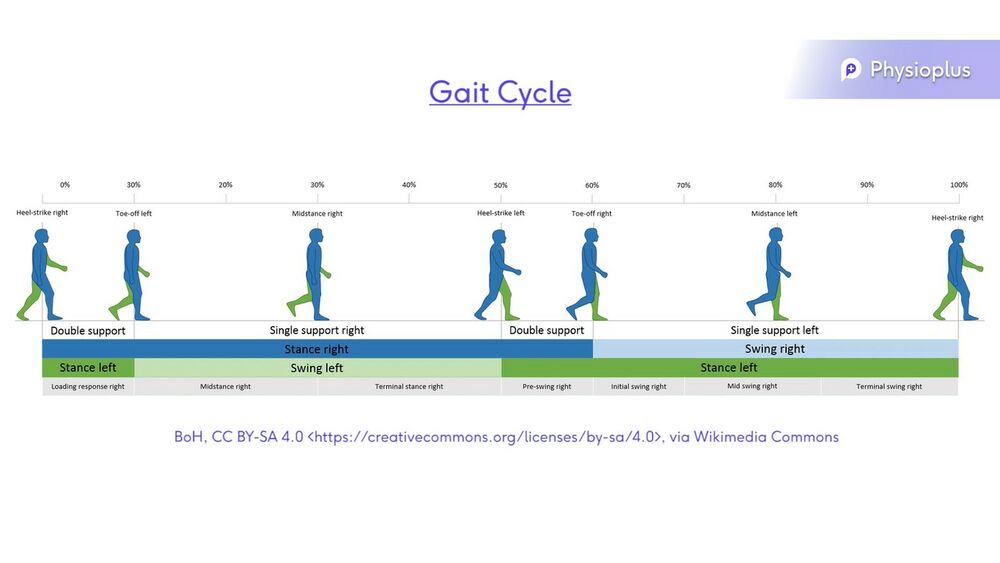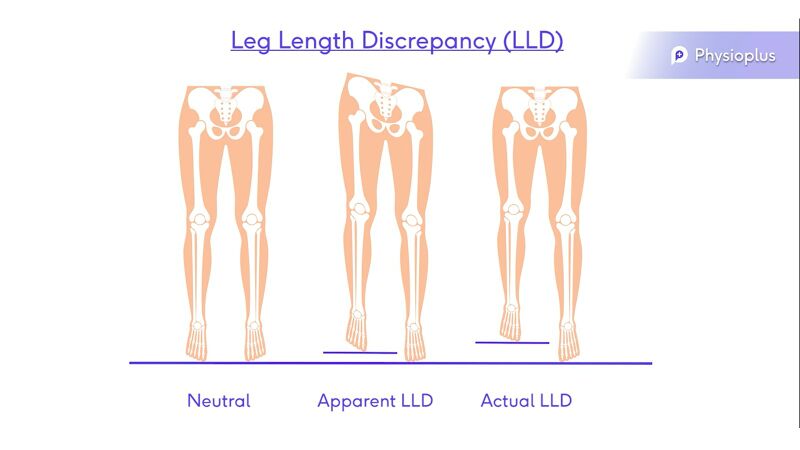Foot Orthotics Assessment: Difference between revisions
Carin Hunter (talk | contribs) No edit summary |
Kim Jackson (talk | contribs) m (Text replacement - "[[Orthotics" to "[[Introduction to Orthotics") |
||
| (18 intermediate revisions by 5 users not shown) | |||
| Line 2: | Line 2: | ||
== Introduction == | == Introduction == | ||
[[Orthotics]] is a branch of medicine that deals with the making and fitting of orthotic devices. There are many interchangeable terms for this, a few being [[Foot Orthoses|foot orthotic]]/orthosis/insole/shoe insert. Before an orthosis can be prescribed, a comprehensive assessment needs to be conducted to correctly select a device that will meet all the requirements. Selecting an orthotic device can be complicated as there are many aspects that need to be considered aside from biomechanical factors, including comfort and aesthetics to enhance patient compliance. | [[Introduction to Orthotics]] is a branch of medicine that deals with the making and fitting of orthotic devices. There are many interchangeable terms for this, a few being [[Foot Orthoses|foot orthotic]]/orthosis/insole/shoe insert. Before an orthosis can be prescribed, a comprehensive assessment needs to be conducted to correctly select a device that will meet all the requirements. Selecting an orthotic device can be complicated as there are many aspects that need to be considered aside from [[Biomechanical Assessment of Foot and Ankle|biomechanical]] factors, including comfort and aesthetics to enhance patient compliance. | ||
== Three Main Types of Foot Orthoses == | == Three Main Types of Foot Orthoses == | ||
| Line 11: | Line 11: | ||
== Purpose of Foot Orthoses == | == Purpose of Foot Orthoses == | ||
A foot orthosis is generally referred to as an "externally applied apparatus that can be inserted in a shoe to help support or improve the function of the foot and/or ankle."<ref name=":1" /> The | A [[Foot Anatomy|foot]] orthosis is generally referred to as an "externally applied apparatus that can be inserted in a shoe to help support or improve the function of the foot and/or ankle."<ref name=":1" /> The main goals of an orthotic device are to improve biomechanics, re-distribute pressure or to accommodate congenital or acquired deformities. The ultimate aim is to achieve / maintain near-neutral subtalar joint alignment during the [[Gait|gait cycle]] or the individual's highest functional level.<ref name=":1">Elattar O, Smith T, Ferguson A, Farber D, Wapner K. [https://journals.sagepub.com/doi/full/10.1177/2473011418780700 Uses of braces and orthotics for conservative management of foot and ankle disorders.] Foot & Ankle Orthopaedics. 2018 Aug 3;3(3):2473011418780700.</ref> | ||
# Support | # Support | ||
# Correct, if mobile | # Correct, if mobile | ||
| Line 30: | Line 30: | ||
* The [[Plantar Aponeurosis|plantar fascia]] is a strong, fibrous tissue. Because it is stiff and largely impermeable, it is able to help protect the muscles of the sole of the foot.<ref>Welte L, Kelly LA, Kessler SE, Lieberman DE, D'Andrea SE, Lichtwark GA, Rainbow MJ. [https://royalsocietypublishing.org/doi/abs/10.1098/rspb.2020.2095 The extensibility of the plantar fascia influences the windlass mechanism during human running.] Proceedings of the Royal Society B. 2021 Jan 27;288(1943):20202095.</ref><ref name=":2">Orthopaedia.com. Anatomy of the foot and ankle. Available from: https://orthopaedia.com/page/Anatomy-of-the-Foot-Ankle (accessed 10/02/2022).</ref> | * The [[Plantar Aponeurosis|plantar fascia]] is a strong, fibrous tissue. Because it is stiff and largely impermeable, it is able to help protect the muscles of the sole of the foot.<ref>Welte L, Kelly LA, Kessler SE, Lieberman DE, D'Andrea SE, Lichtwark GA, Rainbow MJ. [https://royalsocietypublishing.org/doi/abs/10.1098/rspb.2020.2095 The extensibility of the plantar fascia influences the windlass mechanism during human running.] Proceedings of the Royal Society B. 2021 Jan 27;288(1943):20202095.</ref><ref name=":2">Orthopaedia.com. Anatomy of the foot and ankle. Available from: https://orthopaedia.com/page/Anatomy-of-the-Foot-Ankle (accessed 10/02/2022).</ref> | ||
* Its origins are deep within the plantar surface of the calcaneus and it fans out across the metatarsal heads. It divides and attaches to the base of the phalanges of each toe.<ref name=":2" /> | * Its origins are deep within the plantar surface of the [[calcaneus]] and it fans out across the [[Metatarsals|metatarsal]] heads. It divides and attaches to the base of the phalanges of each toe.<ref name=":2" /> | ||
* During walking, as the toes dorsiflex at push off, the plantar fascia wraps around the metatarsal heads and tightens.<ref name=":2" /> This pulls the calcaneus towards the metatarsal heads and in turn maintains the shape of the longitudinal arch and supports the foot to enable propulsion. This is a phenomenon known as the windlass mechanism.<ref>Sichting F, Holowka NB, Ebrecht F, Lieberman DE. [https://onlinelibrary.wiley.com/doi/full/10.1111/joa.13173 Evolutionary anatomy of the plantar aponeurosis in primates, including humans.] Journal of anatomy. 2020 Jul;237(1):85-104.</ref> | * During [[Walking - Muscles Used|walking]], as the toes dorsiflex at push off, the plantar fascia wraps around the metatarsal heads and tightens.<ref name=":2" /> This pulls the calcaneus towards the metatarsal heads and in turn maintains the shape of the longitudinal arch and supports the foot to enable propulsion. This is a phenomenon known as the windlass mechanism.<ref>Sichting F, Holowka NB, Ebrecht F, Lieberman DE. [https://onlinelibrary.wiley.com/doi/full/10.1111/joa.13173 Evolutionary anatomy of the plantar aponeurosis in primates, including humans.] Journal of anatomy. 2020 Jul;237(1):85-104.</ref> | ||
== Windlass Mechanism == | == Windlass Mechanism == | ||
The windlass mechanism was first described by JH Hicks in 1954. Essentially it is: "a one-to-one coupling between metatarsal joint dorsiflexion and medial longitudinal arch rise."<ref name=":3" /> Based on an engineering concept of lifting weights via a pulley system, Hicks noted that during dorsiflexion of the toes, the plantar aponeurosis tightens. This draws the | The [[Windlass Test|windlass mechanism]] was first described by JH Hicks in 1954. Essentially it is: "a one-to-one coupling between metatarsal joint dorsiflexion and medial longitudinal arch rise."<ref name=":3" /> Based on an engineering concept of lifting weights via a pulley system, Hicks noted that during dorsiflexion of the toes, the plantar [[aponeurosis]] tightens. This draws the metatarsal heads towards the calcaneus, which increases the height of the [[Arches of the Foot|longitudinal arch]].<ref name=":3" /> This action occurs naturally at push off in the [[Gait Cycle|gait cycle]] as the toes dorsiflex and the foot becomes stiffer to aid propulsion. During loading and mid stance, the arch will stretch. | ||
The human foot is flexible due to its many articulations. However, it needs to be both flexible and rigid to promote normal gait.<ref>Kelly LA, Lichtwark G, Cresswell AG. [https://royalsocietypublishing.org/doi/10.1098/rsif.2014.1076 Active regulation of longitudinal arch compression and recoil during walking and running]. J R Soc Interface. 2015;12(102):20141076.</ref> It is important to remember that the plantar fascia will stretch and recoil at different stages of the gait cycle.<ref name=":3">Sichting F, Ebrecht F. [https://journals.plos.org/plosone/article?id=10.1371/journal.pone.0249965 The rise of the longitudinal arch when sitting, standing, and walking: Contributions of the windlass mechanism]. PloS one. 2021 Apr 8;16(4):e0249965.</ref> | |||
== Important Joints to Consider for Foot Orthosis == | == Important Joints to Consider for Foot Orthosis == | ||
| Line 40: | Line 42: | ||
# '''Hindfoot''' | # '''Hindfoot''' | ||
## Talocrural joint | ## Talocrural joint | ||
## | ## [[Subtalar Joint|Subtalar joint]] | ||
# '''Mid Foot''' | # '''Mid Foot''' | ||
## Tarsometatarsal joint | ## Tarsometatarsal joint | ||
| Line 46: | Line 48: | ||
## Talonavicular joint | ## Talonavicular joint | ||
# '''Fore Foot''' | # '''Fore Foot''' | ||
## | ## First metatarsal phalangeal joint | ||
More information on foot and ankle joints is available [[Basic Foot and Ankle Anatomy - Bones and Ligaments|here]]. | More information on foot and ankle joints is available [[Basic Foot and Ankle Anatomy - Bones and Ligaments|here]]. | ||
| Line 53: | Line 55: | ||
<div class="col">[[File:Inversion vs eversion.jpg|left|frameless|600x600px]] | <div class="col">[[File:Inversion vs eversion.jpg|left|frameless|600x600px]] | ||
</div> | </div> | ||
<div class="col">Valgus | <div class="col">Valgus = everted <br>Neutral <br>Varus = inverted<br>Pronation = eversion, abduction, dorsiflexion and medially rotated subtalar joint<br>Supination = inversion, adduction, plantarflexion and laterally rotated subtalar joint | ||
</div> | </div> | ||
</div> | </div> | ||
== Purpose of the Human Foot == | == Purpose of the Human Foot == | ||
“[The human foot] enables propulsion through space, adaptation to uneven terrain, absorption of shock, and support of body weight.”<ref>Bolgla LA, Malone TR. [https://www.ncbi.nlm.nih.gov/pmc/articles/PMC385265/ Plantar fasciitis and the windlass mechanism: a biomechanical link to clinical practice.] Journal of athletic training. 2004 Jan;39(1):77.</ref> However, its structure, function and position leave it exposed to injury. To understand the foot, it is necessary to assess it in non-weight-bearing and weight-bearing positions, and during gait.<ref name=":4">Fisher D. Introduction to Foot Orthotics Course. | “[The human foot] enables propulsion through space, adaptation to uneven terrain, absorption of shock, and support of body weight.”<ref>Bolgla LA, Malone TR. [https://www.ncbi.nlm.nih.gov/pmc/articles/PMC385265/ Plantar fasciitis and the windlass mechanism: a biomechanical link to clinical practice.] Journal of athletic training. 2004 Jan;39(1):77.</ref> However, its structure, function and position leave it exposed to injury. To understand the foot, it is necessary to assess it in non-weight-bearing and weight-bearing positions, and during gait.<ref name=":4">Fisher D. Introduction to Foot Orthotics Course. Plus , 2022.</ref> | ||
== Orthotic Foot Ankle Assessment == | == Orthotic Foot Ankle Assessment == | ||
During a foot and ankle assessment for orthotics selection, you will need to look at:<ref name=":4" /> | During a foot and ankle assessment for orthotics selection, you will need to look at:<ref name=":4" /> | ||
# Patient history | # Patient history | ||
# Range of motion | # [[Range of Motion|Range of motion]] | ||
# Muscle power | # Muscle power | ||
# Sensation / pain | # [[Sensation]] / pain | ||
# Proprioception | # [[Proprioception]] | ||
# Biomechanical analysis | # Biomechanical analysis | ||
# Leg length | # Leg length | ||
| Line 88: | Line 90: | ||
'''<u>Active and passive movements of the foot and ankle</u>'''<ref name=":0">Alazzawi S, Sukeik M, King D, Vemulapalli K. [https://www.ncbi.nlm.nih.gov/pmc/articles/PMC5241541/ Foot and ankle history and clinical examination: A guide to everyday practice.] World journal of orthopedics. 2017 Jan 18;8(1):21.</ref> | '''<u>Active and passive movements of the foot and ankle</u>'''<ref name=":0">Alazzawi S, Sukeik M, King D, Vemulapalli K. [https://www.ncbi.nlm.nih.gov/pmc/articles/PMC5241541/ Foot and ankle history and clinical examination: A guide to everyday practice.] World journal of orthopedics. 2017 Jan 18;8(1):21.</ref> | ||
* | * Quick test for the ankle joint = dorsiflexion / plantarflexion | ||
* | * Quick test for the subtalar joint = pronation/ supination | ||
* Eversion/ inversion | * Eversion/ inversion | ||
* Abduction / adduction | * Abduction / adduction | ||
* | * Quick test for the metatarsal phalangeal joints = toe flexion/ extension | ||
'''<u>Non-weight-bearing assessment</u>'''<ref name=":0" /> | '''<u>Non-weight-bearing assessment</u>'''<ref name=":0" /> | ||
* [[Windlass Test]] - can be effective for examining [[Assessment of Plantar Heel Pain - A Literature Review|dysfunction of the plantar fascia]] although its specificity has not been proved | * [[Windlass Test]] - can be effective for examining [[Assessment of Plantar Heel Pain - A Literature Review|dysfunction of the plantar fascia]] although its specificity has not been proved:<ref name=":4" /> | ||
** Passively extend hallux at the | ** Passively extend hallux at the metatarsal phalangeal joint | ||
*** The plantar aponeurosis should tighten and reduce the distance between the calcaneus and metatarsals | *** The plantar aponeurosis should tighten and reduce the distance between the calcaneus and metatarsals | ||
*** Please note that the angle of extension to initiate the arch can vary | *** Please note that the angle of extension to initiate the arch can vary | ||
*** Increases medial longitudinal arch | *** Increases medial longitudinal arch | ||
**'''Positive Test''': | **'''Positive Test''': A test is considered positive if passive extension continues to end range or until the patient's plantar fasciitis pain is reproduced | ||
* Pain in medial calcaneus and plantar fascia on palpation<ref name=":4" /> | * Pain in medial calcaneus and plantar fascia on palpation<ref name=":4" /> | ||
{{#ev:youtube|ZO0wREhjxH0}} | {{#ev:youtube|ZO0wREhjxH0}} | ||
* '''<u>Hallux limitus/rigidus</u>'''<ref name=":4" /> | * '''<u>Hallux limitus/rigidus</u>'''<ref name=":4" /> | ||
* Both affect the windlass mechanism, gait pattern and normal functioning of the foot.<ref name=":4" /> | ** Both affect the windlass mechanism, gait pattern and normal functioning of the foot.<ref name=":4" /> | ||
**[[Hallux Rigidus]]<ref>Colò G, Fusini F, Samaila EM, Rava A, Felli L, Alessio-Mazzola M, Magnan B. [https://www.ncbi.nlm.nih.gov/pmc/articles/PMC7944704/ The efficacy of shoe modifications and foot orthoses in treating patients with hallux rigidus: a comprehensive review of literature.] Acta Bio Medica: Atenei Parmensis. 2020;91(Suppl 14).</ref> | ***[[Hallux Rigidus|Hallux rigidus]]<ref>Colò G, Fusini F, Samaila EM, Rava A, Felli L, Alessio-Mazzola M, Magnan B. [https://www.ncbi.nlm.nih.gov/pmc/articles/PMC7944704/ The efficacy of shoe modifications and foot orthoses in treating patients with hallux rigidus: a comprehensive review of literature.] Acta Bio Medica: Atenei Parmensis. 2020;91(Suppl 14).</ref> | ||
*** Very limited dorsiflexion mobility or no movement. There is crepitation with joint mobilisation and pain associated with any movement of the first MTP joint. | **** Very limited dorsiflexion mobility or no movement. There is crepitation with joint mobilisation and pain associated with any movement of the first MTP joint. | ||
** Hallux | *** Hallux limitus<ref>Graydon M. [https://pedorthic.ca/wp-content/uploads/2021/10/Clinical-Practice-Guidelines-Second-Edition-PDF.pdf#page=153 Hallux Limitus/Rigidus. Clinical Practice Guidelines.] 2018:140.</ref> | ||
*** Reduced dorsiflexion movement, resulting in decreased range of dorsiflexion at the first | **** Reduced dorsiflexion movement, resulting in decreased range of dorsiflexion at the first metatarsal phalangeal joint. | ||
*** In gait, there is a loss of | **** In gait, there is a loss of metatarsal phalangeal joint extension during the second half of the single-support phase, when the weightbearing foot is in maximal dorsiflexion.<ref name=":4" /> | ||
{{#ev:youtube|5WSbXxVTzNo}} | {{#ev:youtube|5WSbXxVTzNo}} | ||
==== 3. Muscles of the Foot and Ankle ==== | ==== 3. Muscles of the Foot and Ankle ==== | ||
There are four muscle compartments in the lower leg. The gold standard test for assessing these muscles is the standardised [[Muscle Strength Testing|Oxford Scale]]. | There are four muscle compartments in the lower leg. The gold standard test for assessing these muscles is the standardised [[Muscle Strength Testing|Oxford Scale]]. | ||
''' | '''<u>1. Superficial Posterior Muscle Compartment</u>''' | ||
'''Action''': [[Manual Muscle Testing: Plantarflexion|Plantarflexion]] | |||
'''Muscles''': [[Gastrocnemius]], [[Soleus]] and [[Plantaris]] | |||
[[File:Posterior_superficial_muscle_compartment.jpg|alt=|frameless|600x600px]] | |||
'''<u>2. Deep Posterior Muscle Compartment</u>''' | |||
'''Action''': [[Manual Muscle Testing: Plantarflexion|Plantarflexion]], adduction and [[Manual Muscle Testing: Ankle Inversion|inversion]] | |||
'''Action''': [[Manual Muscle Testing: Plantarflexion|Plantarflexion]], | |||
'''Muscles''': [[Tibialis Posterior]], Flexor Hallicus Longus and Flexor Digitorum Longus | '''Muscles''': [[Tibialis Posterior]], Flexor Hallicus Longus and Flexor Digitorum Longus | ||
[[File:Deep_Posterior_compartment.jpg|alt=|frameless|600x600px]] | |||
'''<u>3. Lateral Muscle Compartment</u>''' | |||
'''Action''': [[Manual Muscle Testing: Dorsiflexion|Dorsiflexion]], abduction and [[Manual Muscle Testing: Ankle Eversion|eversion]] | |||
'''Action''': [[Manual Muscle Testing: Dorsiflexion|Dorsiflexion]], | |||
'''Muscles''': Peroneus Longus and [[Peroneus Brevis]] | '''Muscles''': Peroneus Longus and [[Peroneus Brevis]] | ||
[[File:Lateral_compartment.jpg|alt=|frameless|600x600px]] | |||
'''<u>4. Anterior Muscle Compartment</u>''' | |||
'''Action''': [[Manual Muscle Testing: Dorsiflexion|Dorsiflexion]], adduction and [[Manual Muscle Testing: Ankle Inversion|inversion]] | |||
'''Muscles''': [[Tibialis Anterior]], Extensor Hallicus Longus and [[Extensor Digitorum Longus]] | |||
[[File:Anterior_muscle_compartment.jpg|alt=|frameless|600x600px]] | |||
See the following pages for more information on the muscle testing of: | See the following pages for more information on the muscle testing of: | ||
* [[Manual Muscle Testing: Dorsiflexion|Dorsiflexion]] | * [[Manual Muscle Testing: Dorsiflexion|Dorsiflexion]] | ||
* [[Manual Muscle Testing: Plantarflexion|Plantarflexion]] | * [[Manual Muscle Testing: Plantarflexion|Plantarflexion]] | ||
| Line 170: | Line 164: | ||
==== 6. Biomechanical Analysis ==== | ==== 6. Biomechanical Analysis ==== | ||
It is important to assess the foot both statically and dynamically. This is because the foot is not static during the gait cycle, and most foot problems occur during the gait cycle.<ref name=":4" /> | It is important to assess the foot both statically and dynamically. This is because the foot is not static during the gait cycle, and most foot problems occur during the gait cycle.<ref name=":4" /> It is necessary to look at the whole kinetic chain, including knee and hip/pelvis position, as well as subtalar alignment. | ||
'''<u>Static Analysis:</u>''' | |||
This will comprise of the following tests:<ref name=":4" /> | |||
* Too many toes/ too few toes - useful for distinguishing between a pronated and supinated foot | # Too many toes | ||
#* Too many toes/ too few toes - this test is useful for distinguishing between a pronated and supinated foot | |||
# Jack's test | |||
# Windlass test | |||
# Coleman Block Test | |||
# Rear foot and forefoot alignment | |||
#* Normal/ideal foot alignment occurs when:<ref name=":4" /> | |||
#** Distal 1/3 of leg is vertical | |||
#** Calcaneus is vertical to the supporting surface | |||
#** Plantar forefoot is parallel to the plantar rearfoot | |||
#** Variations from this “normal’ foot alignment (‘intrinsic foot deformities’) lead to abnormal foot function | |||
{{#ev:youtube|N2DmBGXodUY}} | {{#ev:youtube|N2DmBGXodUY}} | ||
* Jack's Test | * Jack's Test - A test for evaluating the flexibility of a pes cavus (i.e. high arch) | ||
{{#ev:youtube|j-mqaiKfsZQ}} | {{#ev:youtube|j-mqaiKfsZQ}} | ||
* Windlass test | * Windlass test - A test that is effective in examining dysfunction of the plantar fascia by causing a direct stretch on the plantar aponeurosis / fascia | ||
{{#ev:youtube|ZO0wREhjxH0}} | {{#ev:youtube|ZO0wREhjxH0}} | ||
* | * Coleman Block Test | ||
{{#ev:youtube|TCp25F0l7hc}} | |||
'''<u>Dynamic Analysis: Normal Walking</u>'''<ref name=":0" /> | |||
'''<u>Dynamic Normal Walking</u>'''<ref name=":0" /> | |||
* Phases of [[Gait| | * Phases of [[Gait|normal walking]] | ||
** Heel strike | ** Heel strike | ||
** Mid stance | ** Mid stance | ||
| Line 204: | Line 206: | ||
===== The Supination Resistance Test ===== | ===== The Supination Resistance Test ===== | ||
The supination resistance test <ref>McBride S, Dixon P, Mokha M, Cheng MS. [https://www.sciencedirect.com/science/article/abs/pii/S0966636219302796 The relationship between supination resistance and the kinetics and kinematics of the foot and ankle during gait]. Gait & Posture. 2019 Sep 1;73:239-45.</ref> | The supination resistance test<ref>McBride S, Dixon P, Mokha M, Cheng MS. [https://www.sciencedirect.com/science/article/abs/pii/S0966636219302796 The relationship between supination resistance and the kinetics and kinematics of the foot and ankle during gait]. Gait & Posture. 2019 Sep 1;73:239-45.</ref> is a very useful test when determining how much force is required from an orthotic device to supinate a foot.<ref name=":7" /> It has been shown to be clinically reliable, when tested by a skilled clinician.<ref name=":7">Noakes H, Payne C. [https://pubmed.ncbi.nlm.nih.gov/12756308/ The reliability of the manual supination resistance test.] Journal of the American Podiatric Medical Association. 2003 May;93(3):185-9.</ref> | ||
'''<u>Results</u>''': | |||
A moderate supination resistance score indicates the use of a '''MODERATE arch orthotic'''. | * A high supination resistance score indicates the use of a '''HIGH arch orthotic'''. | ||
* A moderate supination resistance score indicates the use of a '''MODERATE arch orthotic'''. | |||
* A low supination resistance score indicates the use of a '''LOW arch orthotic'''. | |||
'''Watch the video below to see how the test is conducted:''' | |||
{{#ev:youtube|a1gEKL0HINY}} | {{#ev:youtube|a1gEKL0HINY}} | ||
===== Root Theory ===== | ===== Root Theory ===== | ||
The root theory was originally developed by Dr.Merton L. Root | The root theory was originally developed by Dr. Merton L. Root in the 1950s and 1960s. Alternative terms for his theory found in literature include: “the foot morphology theory,” “the subtalar joint neutral theory,” or the “Rootian theory”.<ref name=":5">Harradine P, Gates L, Bowen C. [https://www.jospt.org/doi/full/10.2519/jospt.2018.0604 If it doesn't work, why do we still do it? The continuing use of subtalar joint neutral theory in the face of overpowering critical research.] journal of orthopaedic & sports physical therapy. 2018 Mar;48(3):130-2.</ref> Simply put, the Root Theory is based on a series of static measurements that the author believes can predict kinematic function. In order for the foot to be considered "normal", the subtalar joint (STJ) should be in a neutral position with the midtarsal joint fully locked.<ref>Root ML. Normal and abnormal function of the foot. Clinical biomechanics. 1977;2.</ref> This occurs between mid-stance and heel-off during walking.<ref name=":6">McPoil TG, Hunt GC. [https://www.jospt.org/doi/abs/10.2519/jospt.1995.21.6.381 Evaluation and management of foot and ankle disorders: present problems and future directions.] Journal of Orthopaedic & Sports Physical Therapy. 1995 Jun;21(6):381-8.</ref> Any deviations from this STJ alignment is considered "abnormal" and would, therefore, result in mechanical dysfunction. | ||
A 2017 study by Jarvis et al.<ref name=":8">Jarvis HL, Nester CJ, Bowden PD, Jones RK. [https://link.springer.com/article/10.1186/s13047-017-0189-2 Challenging the foundations of the clinical model of foot function: further evidence that the root model assessments fail to appropriately classify foot function.] Journal of foot and ankle research. 2017 Dec;10(1):7.</ref> was conducted to investigate foot kinematics between normal and abnormal feet based on Root et al.'s classification. The aim was to assess:<ref name=":8" /> | |||
* If there are differences in foot kinematics during gait between feet with / without Root et al.'s structural deformities | |||
* If there is a relationship between the amount of structural deformity and foot kinematic compensations during gait | |||
* If individuals without symptoms achieve the neutral subtalar position during gait | |||
After analysing the results, the authors found that there is no association between the deformities proposed by Root et al. and the differences in foot kinematics during gait.<ref name=":8" /> | |||
For more information on the Root theory and other theories of foot function please see the page on [[Models of Foot Function]]. | |||
===== The Kirby Proposal ===== | |||
Dr Kirby was a well known student of Dr Root, and after years of studies, he refuted Dr Root's theory on 11 points.<ref>Kirby KA. [https://www.researchgate.net/publication/12654398_Biomechanics_of_the_normal_and_abnormal_foot Biomechanics of the normal and abnormal foot]. Journal of the American Podiatric Medical Association. 2000 Jan;90(1):30-4.</ref> | |||
In summary:<ref>Kirby KA. Facebook: What is Root theory. Available from: https://www.facebook.com/permalink.php?story_fbid=1281708978593009&id=553529644744283 (accessed 28/02/2022).</ref> | |||
* Kirby disagrees with the theory that the heel vertical position is the most desirable position for the foot to function in and the orthosis to control the foot in, which is one of the fundamental points of the Root Model. | |||
* Root had strong opinions on the type of materials that orthoses should be made out of and often advocated for rigid, unaccommodating materials. Kirby has offered examples where more accommodating materials can be advantageous. | |||
* Root and Kirby disagree on the length of a foot orthosis. Root believed that the orthosis should not extend past the metatarsal necks and conditions distal to this point were unable to be treated with orthotics. Kirby has subsequently achieved good results with treating a plantarflexed third metatarsal. | |||
* Dr. Bill Orien<ref>Glaser ES, Fleming D. [https://faoj.wordpress.com/page/30/?cat=-1 The Foot and Ankle Online Journal.]</ref> and Dr Root advocated for a list of "Laws of Foot Function", many of which Dr Kirby disagrees with, such as "If a calcaneus is everted by more than two degrees then it will continue pronating until the maximally pronated position of the STJ is reached."<ref>Spooner S. [https://podiatryarena.com/index.php?threads/challenging-the-foundations-of-the-clinical-model-of-foot-function.108197/page-3 Podiatry Arena].</ref> | |||
* Dr Kirby also disagreed with theories by John Weed<ref>Kirby KA. [https://www.researchgate.net/profile/Kevin-Kirby-2/publication/11655612_What_future_direction_should_podiatric_biomechanics_take/links/0a85e535685f16536d000000/What-future-direction-should-podiatric-biomechanics-take.pdf What future direction should podiatric biomechanics take?]. Clinics in podiatric medicine and surgery. 2001 Oct 1;18(4):719-24.</ref> on casting and how it can affect subtalar neutral. | |||
Kirby | For more detailed information, you can follow Dr Kirby on his [https://www.facebook.com/kevinakirbydpm/ Facebook] page or his [http://www.kirbypodiatry.com/?fbclid=IwAR0piOHJZlrXkZVHvbLu94nw8XnguPgqtNClbZ1FxMsrM45bIxUF7_qbI1g website]. | ||
Alternatively, you can watch this video if you would like to learn more:{{#ev:youtube|rDcG224Zqi4}}<ref>Many Inaccuracies in Root Biomechanics Theory. Available from: https://www.youtube.com/watch?v=rDcG224Zqi4</ref> | |||
==== 7. [[Leg Length Discrepancy]] (LLD) ==== | ==== 7. [[Leg Length Discrepancy]] (LLD) ==== | ||
| Line 269: | Line 254: | ||
[[File:Leg Length.jpg|center|frameless|800x800px]] | [[File:Leg Length.jpg|center|frameless|800x800px]] | ||
This video covers | === Additional information: === | ||
This video covers an orthotic Biomechanical Assessment: | |||
{{#ev:youtube|Q-eEDDqOC-4}} | {{#ev:youtube|Q-eEDDqOC-4}} | ||
| Line 277: | Line 263: | ||
[[Category:Foot - Assessment and Examination]] | [[Category:Foot - Assessment and Examination]] | ||
[[Category:Foot - Interventions]] | [[Category:Foot - Interventions]] | ||
[[Category:ReLAB | [[Category:ReLAB-HS Course Page]] | ||
[[Category:Rehabilitation]] | [[Category:Rehabilitation]] | ||
[[Category:Prosthetics and Orthotics]] | |||
Latest revision as of 12:46, 12 December 2022
Top Contributors - Carin Hunter, Jess Bell, Kim Jackson, Ewa Jaraczewska, Lucinda hampton and Tarina van der Stockt
Introduction[edit | edit source]
Introduction to Orthotics is a branch of medicine that deals with the making and fitting of orthotic devices. There are many interchangeable terms for this, a few being foot orthotic/orthosis/insole/shoe insert. Before an orthosis can be prescribed, a comprehensive assessment needs to be conducted to correctly select a device that will meet all the requirements. Selecting an orthotic device can be complicated as there are many aspects that need to be considered aside from biomechanical factors, including comfort and aesthetics to enhance patient compliance.
Three Main Types of Foot Orthoses[edit | edit source]
- Off the shelf (OTS) insoles
- Functional foot orthoses (FFO)
- Custom moulded total contact insoles (TCI)
Purpose of Foot Orthoses[edit | edit source]
A foot orthosis is generally referred to as an "externally applied apparatus that can be inserted in a shoe to help support or improve the function of the foot and/or ankle."[1] The main goals of an orthotic device are to improve biomechanics, re-distribute pressure or to accommodate congenital or acquired deformities. The ultimate aim is to achieve / maintain near-neutral subtalar joint alignment during the gait cycle or the individual's highest functional level.[1]
- Support
- Correct, if mobile
- Accommodate if not
- Shock absorption
- Re-distribute pressure
Basic Foot Anatomy[edit | edit source]
For a detailed discussion of foot and ankle anatomy, please click the links.
- 28 bones
- 33 joints
- Ligaments
- Tendons
- Muscles
- Plantar fascia
Plantar Fascia[edit | edit source]
- The plantar fascia is a strong, fibrous tissue. Because it is stiff and largely impermeable, it is able to help protect the muscles of the sole of the foot.[2][3]
- Its origins are deep within the plantar surface of the calcaneus and it fans out across the metatarsal heads. It divides and attaches to the base of the phalanges of each toe.[3]
- During walking, as the toes dorsiflex at push off, the plantar fascia wraps around the metatarsal heads and tightens.[3] This pulls the calcaneus towards the metatarsal heads and in turn maintains the shape of the longitudinal arch and supports the foot to enable propulsion. This is a phenomenon known as the windlass mechanism.[4]
Windlass Mechanism[edit | edit source]
The windlass mechanism was first described by JH Hicks in 1954. Essentially it is: "a one-to-one coupling between metatarsal joint dorsiflexion and medial longitudinal arch rise."[5] Based on an engineering concept of lifting weights via a pulley system, Hicks noted that during dorsiflexion of the toes, the plantar aponeurosis tightens. This draws the metatarsal heads towards the calcaneus, which increases the height of the longitudinal arch.[5] This action occurs naturally at push off in the gait cycle as the toes dorsiflex and the foot becomes stiffer to aid propulsion. During loading and mid stance, the arch will stretch.
The human foot is flexible due to its many articulations. However, it needs to be both flexible and rigid to promote normal gait.[6] It is important to remember that the plantar fascia will stretch and recoil at different stages of the gait cycle.[5]
Important Joints to Consider for Foot Orthosis[edit | edit source]
- Hindfoot
- Talocrural joint
- Subtalar joint
- Mid Foot
- Tarsometatarsal joint
- Calcaneocuboid joint
- Talonavicular joint
- Fore Foot
- First metatarsal phalangeal joint
More information on foot and ankle joints is available here.
Terminology used in Orthotics[edit | edit source]
Neutral
Varus = inverted
Pronation = eversion, abduction, dorsiflexion and medially rotated subtalar joint
Supination = inversion, adduction, plantarflexion and laterally rotated subtalar joint
Purpose of the Human Foot[edit | edit source]
“[The human foot] enables propulsion through space, adaptation to uneven terrain, absorption of shock, and support of body weight.”[7] However, its structure, function and position leave it exposed to injury. To understand the foot, it is necessary to assess it in non-weight-bearing and weight-bearing positions, and during gait.[8]
Orthotic Foot Ankle Assessment[edit | edit source]
During a foot and ankle assessment for orthotics selection, you will need to look at:[8]
- Patient history
- Range of motion
- Muscle power
- Sensation / pain
- Proprioception
- Biomechanical analysis
- Leg length
1. Patient History[edit | edit source]
- Gait pattern and biomechanical analysis on entrance
- History of underlying conditions, foot problems and the primary problem affecting the individual on consultation.
2. Range of Motion[edit | edit source]
When considering foot orthosis design, the following range of motion tests should be carried out:
- Active
- Passive
- Weight-bearing
- Non-weight-bearing
Active and passive movements of the foot and ankle[10]
- Quick test for the ankle joint = dorsiflexion / plantarflexion
- Quick test for the subtalar joint = pronation/ supination
- Eversion/ inversion
- Abduction / adduction
- Quick test for the metatarsal phalangeal joints = toe flexion/ extension
Non-weight-bearing assessment[10]
- Windlass Test - can be effective for examining dysfunction of the plantar fascia although its specificity has not been proved:[8]
- Passively extend hallux at the metatarsal phalangeal joint
- The plantar aponeurosis should tighten and reduce the distance between the calcaneus and metatarsals
- Please note that the angle of extension to initiate the arch can vary
- Increases medial longitudinal arch
- Positive Test: A test is considered positive if passive extension continues to end range or until the patient's plantar fasciitis pain is reproduced
- Passively extend hallux at the metatarsal phalangeal joint
- Pain in medial calcaneus and plantar fascia on palpation[8]
- Hallux limitus/rigidus[8]
- Both affect the windlass mechanism, gait pattern and normal functioning of the foot.[8]
- Hallux rigidus[11]
- Very limited dorsiflexion mobility or no movement. There is crepitation with joint mobilisation and pain associated with any movement of the first MTP joint.
- Hallux limitus[12]
- Reduced dorsiflexion movement, resulting in decreased range of dorsiflexion at the first metatarsal phalangeal joint.
- In gait, there is a loss of metatarsal phalangeal joint extension during the second half of the single-support phase, when the weightbearing foot is in maximal dorsiflexion.[8]
- Hallux rigidus[11]
- Both affect the windlass mechanism, gait pattern and normal functioning of the foot.[8]
3. Muscles of the Foot and Ankle[edit | edit source]
There are four muscle compartments in the lower leg. The gold standard test for assessing these muscles is the standardised Oxford Scale.
1. Superficial Posterior Muscle Compartment
Action: Plantarflexion
Muscles: Gastrocnemius, Soleus and Plantaris
2. Deep Posterior Muscle Compartment
Action: Plantarflexion, adduction and inversion
Muscles: Tibialis Posterior, Flexor Hallicus Longus and Flexor Digitorum Longus
3. Lateral Muscle Compartment
Action: Dorsiflexion, abduction and eversion
Muscles: Peroneus Longus and Peroneus Brevis
4. Anterior Muscle Compartment
Action: Dorsiflexion, adduction and inversion
Muscles: Tibialis Anterior, Extensor Hallicus Longus and Extensor Digitorum Longus
See the following pages for more information on the muscle testing of:
4. Sensation/Pain[edit | edit source]
Please see page on Sensation, Sensory Examination
5. Proprioception[edit | edit source]
Please see page on Proprioception, Assessing Proprioception
6. Biomechanical Analysis[edit | edit source]
It is important to assess the foot both statically and dynamically. This is because the foot is not static during the gait cycle, and most foot problems occur during the gait cycle.[8] It is necessary to look at the whole kinetic chain, including knee and hip/pelvis position, as well as subtalar alignment.
Static Analysis:
This will comprise of the following tests:[8]
- Too many toes
- Too many toes/ too few toes - this test is useful for distinguishing between a pronated and supinated foot
- Jack's test
- Windlass test
- Coleman Block Test
- Rear foot and forefoot alignment
- Normal/ideal foot alignment occurs when:[8]
- Distal 1/3 of leg is vertical
- Calcaneus is vertical to the supporting surface
- Plantar forefoot is parallel to the plantar rearfoot
- Variations from this “normal’ foot alignment (‘intrinsic foot deformities’) lead to abnormal foot function
- Normal/ideal foot alignment occurs when:[8]
- Jack's Test - A test for evaluating the flexibility of a pes cavus (i.e. high arch)
- Windlass test - A test that is effective in examining dysfunction of the plantar fascia by causing a direct stretch on the plantar aponeurosis / fascia
- Coleman Block Test
Dynamic Analysis: Normal Walking[10]
- Phases of normal walking
- Heel strike
- Mid stance
- Terminal stance
- Pre swing
- Swing phase
- Ground clearance is important in swing phase
- Proprioception and balance are important for approximately 40% of the gait pattern where an individual is standing on one leg.[8]
The Supination Resistance Test[edit | edit source]
The supination resistance test[13] is a very useful test when determining how much force is required from an orthotic device to supinate a foot.[14] It has been shown to be clinically reliable, when tested by a skilled clinician.[14]
Results:
- A high supination resistance score indicates the use of a HIGH arch orthotic.
- A moderate supination resistance score indicates the use of a MODERATE arch orthotic.
- A low supination resistance score indicates the use of a LOW arch orthotic.
Watch the video below to see how the test is conducted:
Root Theory[edit | edit source]
The root theory was originally developed by Dr. Merton L. Root in the 1950s and 1960s. Alternative terms for his theory found in literature include: “the foot morphology theory,” “the subtalar joint neutral theory,” or the “Rootian theory”.[15] Simply put, the Root Theory is based on a series of static measurements that the author believes can predict kinematic function. In order for the foot to be considered "normal", the subtalar joint (STJ) should be in a neutral position with the midtarsal joint fully locked.[16] This occurs between mid-stance and heel-off during walking.[17] Any deviations from this STJ alignment is considered "abnormal" and would, therefore, result in mechanical dysfunction.
A 2017 study by Jarvis et al.[18] was conducted to investigate foot kinematics between normal and abnormal feet based on Root et al.'s classification. The aim was to assess:[18]
- If there are differences in foot kinematics during gait between feet with / without Root et al.'s structural deformities
- If there is a relationship between the amount of structural deformity and foot kinematic compensations during gait
- If individuals without symptoms achieve the neutral subtalar position during gait
After analysing the results, the authors found that there is no association between the deformities proposed by Root et al. and the differences in foot kinematics during gait.[18]
For more information on the Root theory and other theories of foot function please see the page on Models of Foot Function.
The Kirby Proposal[edit | edit source]
Dr Kirby was a well known student of Dr Root, and after years of studies, he refuted Dr Root's theory on 11 points.[19]
In summary:[20]
- Kirby disagrees with the theory that the heel vertical position is the most desirable position for the foot to function in and the orthosis to control the foot in, which is one of the fundamental points of the Root Model.
- Root had strong opinions on the type of materials that orthoses should be made out of and often advocated for rigid, unaccommodating materials. Kirby has offered examples where more accommodating materials can be advantageous.
- Root and Kirby disagree on the length of a foot orthosis. Root believed that the orthosis should not extend past the metatarsal necks and conditions distal to this point were unable to be treated with orthotics. Kirby has subsequently achieved good results with treating a plantarflexed third metatarsal.
- Dr. Bill Orien[21] and Dr Root advocated for a list of "Laws of Foot Function", many of which Dr Kirby disagrees with, such as "If a calcaneus is everted by more than two degrees then it will continue pronating until the maximally pronated position of the STJ is reached."[22]
- Dr Kirby also disagreed with theories by John Weed[23] on casting and how it can affect subtalar neutral.
For more detailed information, you can follow Dr Kirby on his Facebook page or his website.
Alternatively, you can watch this video if you would like to learn more:
7. Leg Length Discrepancy (LLD)[edit | edit source]
- Dipping
- Pelvic obliquity
- Retraction
- Scoliosis
- Apparent leg length
- Actual leg length[25]
Additional information:[edit | edit source]
This video covers an orthotic Biomechanical Assessment:
References[edit | edit source]
- ↑ 1.0 1.1 Elattar O, Smith T, Ferguson A, Farber D, Wapner K. Uses of braces and orthotics for conservative management of foot and ankle disorders. Foot & Ankle Orthopaedics. 2018 Aug 3;3(3):2473011418780700.
- ↑ Welte L, Kelly LA, Kessler SE, Lieberman DE, D'Andrea SE, Lichtwark GA, Rainbow MJ. The extensibility of the plantar fascia influences the windlass mechanism during human running. Proceedings of the Royal Society B. 2021 Jan 27;288(1943):20202095.
- ↑ 3.0 3.1 3.2 Orthopaedia.com. Anatomy of the foot and ankle. Available from: https://orthopaedia.com/page/Anatomy-of-the-Foot-Ankle (accessed 10/02/2022).
- ↑ Sichting F, Holowka NB, Ebrecht F, Lieberman DE. Evolutionary anatomy of the plantar aponeurosis in primates, including humans. Journal of anatomy. 2020 Jul;237(1):85-104.
- ↑ 5.0 5.1 5.2 Sichting F, Ebrecht F. The rise of the longitudinal arch when sitting, standing, and walking: Contributions of the windlass mechanism. PloS one. 2021 Apr 8;16(4):e0249965.
- ↑ Kelly LA, Lichtwark G, Cresswell AG. Active regulation of longitudinal arch compression and recoil during walking and running. J R Soc Interface. 2015;12(102):20141076.
- ↑ Bolgla LA, Malone TR. Plantar fasciitis and the windlass mechanism: a biomechanical link to clinical practice. Journal of athletic training. 2004 Jan;39(1):77.
- ↑ 8.00 8.01 8.02 8.03 8.04 8.05 8.06 8.07 8.08 8.09 8.10 Fisher D. Introduction to Foot Orthotics Course. Plus , 2022.
- ↑ Gegen ME, Plummer T, Darr N. An Exploratory Study of The Perceptions of Footwear for Individuals who use Lower Limb Orthotics. Internet Journal of Allied Health Sciences and Practice. 2020;18(4):8.
- ↑ 10.0 10.1 10.2 Alazzawi S, Sukeik M, King D, Vemulapalli K. Foot and ankle history and clinical examination: A guide to everyday practice. World journal of orthopedics. 2017 Jan 18;8(1):21.
- ↑ Colò G, Fusini F, Samaila EM, Rava A, Felli L, Alessio-Mazzola M, Magnan B. The efficacy of shoe modifications and foot orthoses in treating patients with hallux rigidus: a comprehensive review of literature. Acta Bio Medica: Atenei Parmensis. 2020;91(Suppl 14).
- ↑ Graydon M. Hallux Limitus/Rigidus. Clinical Practice Guidelines. 2018:140.
- ↑ McBride S, Dixon P, Mokha M, Cheng MS. The relationship between supination resistance and the kinetics and kinematics of the foot and ankle during gait. Gait & Posture. 2019 Sep 1;73:239-45.
- ↑ 14.0 14.1 Noakes H, Payne C. The reliability of the manual supination resistance test. Journal of the American Podiatric Medical Association. 2003 May;93(3):185-9.
- ↑ Harradine P, Gates L, Bowen C. If it doesn't work, why do we still do it? The continuing use of subtalar joint neutral theory in the face of overpowering critical research. journal of orthopaedic & sports physical therapy. 2018 Mar;48(3):130-2.
- ↑ Root ML. Normal and abnormal function of the foot. Clinical biomechanics. 1977;2.
- ↑ McPoil TG, Hunt GC. Evaluation and management of foot and ankle disorders: present problems and future directions. Journal of Orthopaedic & Sports Physical Therapy. 1995 Jun;21(6):381-8.
- ↑ 18.0 18.1 18.2 Jarvis HL, Nester CJ, Bowden PD, Jones RK. Challenging the foundations of the clinical model of foot function: further evidence that the root model assessments fail to appropriately classify foot function. Journal of foot and ankle research. 2017 Dec;10(1):7.
- ↑ Kirby KA. Biomechanics of the normal and abnormal foot. Journal of the American Podiatric Medical Association. 2000 Jan;90(1):30-4.
- ↑ Kirby KA. Facebook: What is Root theory. Available from: https://www.facebook.com/permalink.php?story_fbid=1281708978593009&id=553529644744283 (accessed 28/02/2022).
- ↑ Glaser ES, Fleming D. The Foot and Ankle Online Journal.
- ↑ Spooner S. Podiatry Arena.
- ↑ Kirby KA. What future direction should podiatric biomechanics take?. Clinics in podiatric medicine and surgery. 2001 Oct 1;18(4):719-24.
- ↑ Many Inaccuracies in Root Biomechanics Theory. Available from: https://www.youtube.com/watch?v=rDcG224Zqi4
- ↑ Menez C, L'Hermette M, Coquart J. Orthotic insoles improve gait symmetry and reduce immediate pain in subjects with mild leg length discrepancy. Frontiers in sports and active living. 2020;2.
